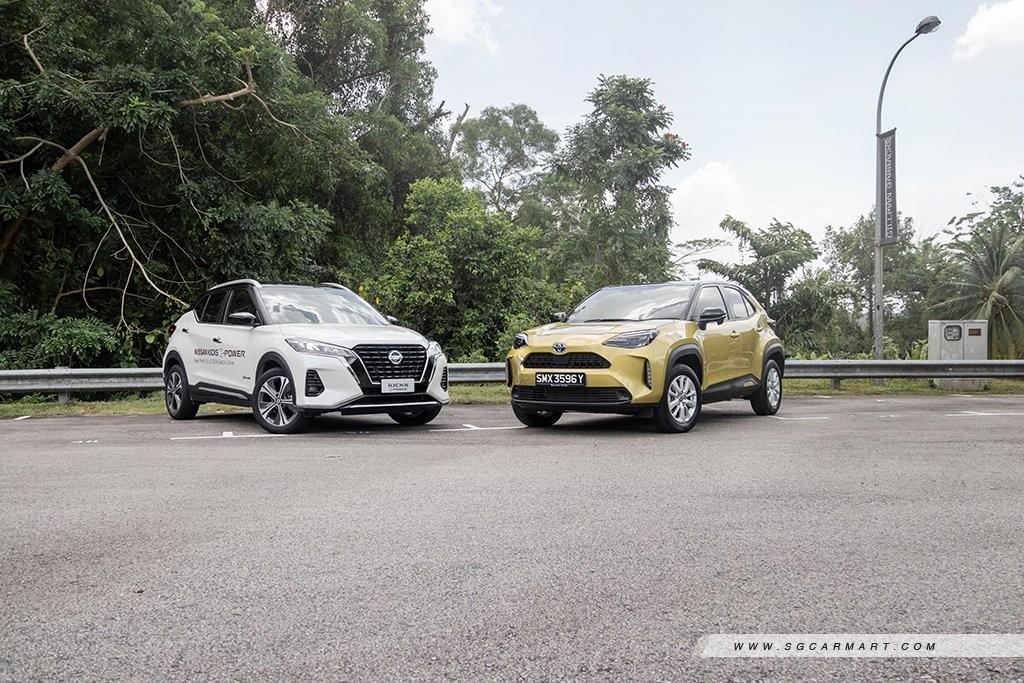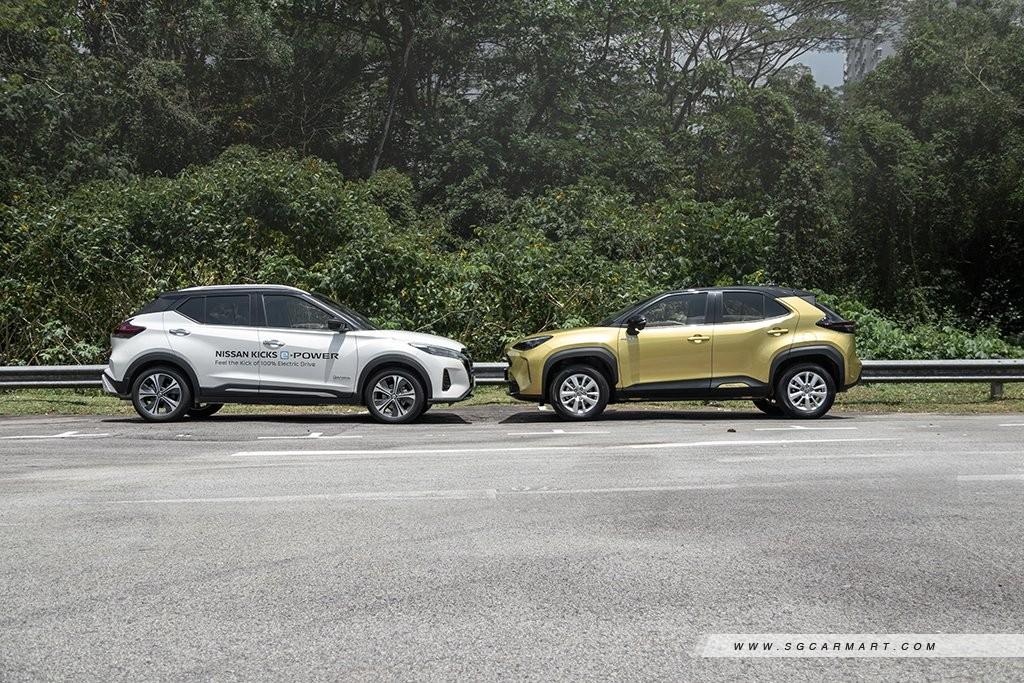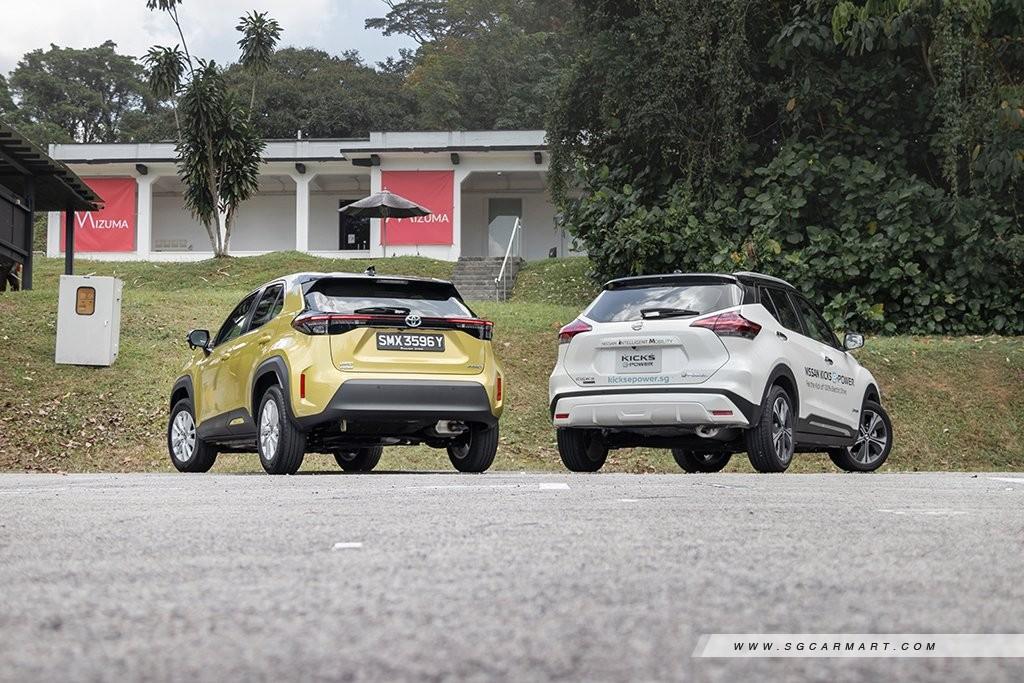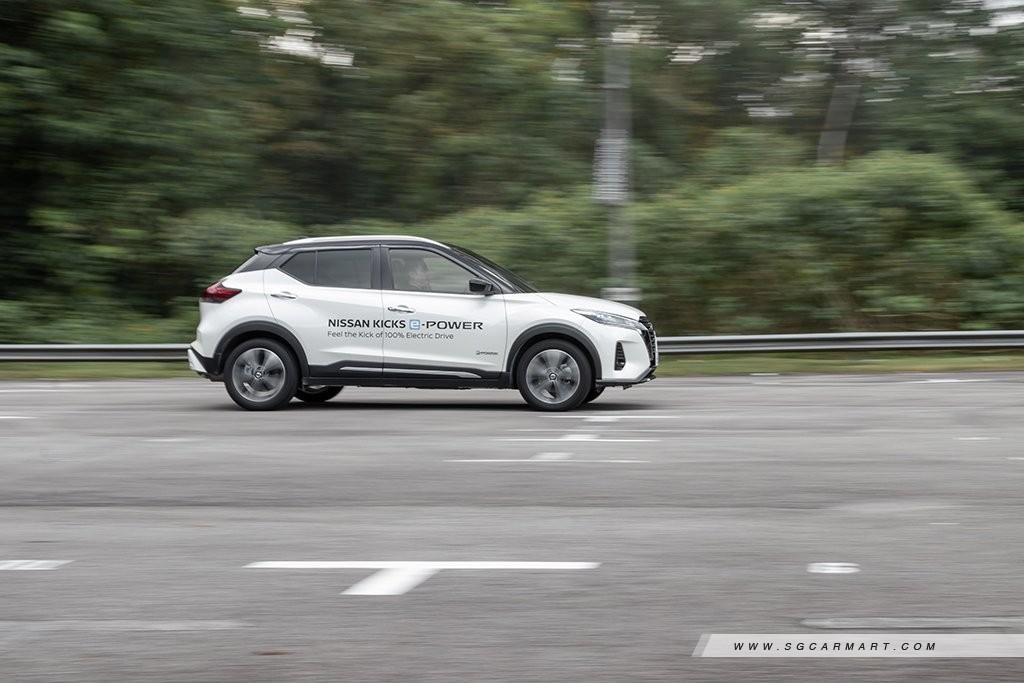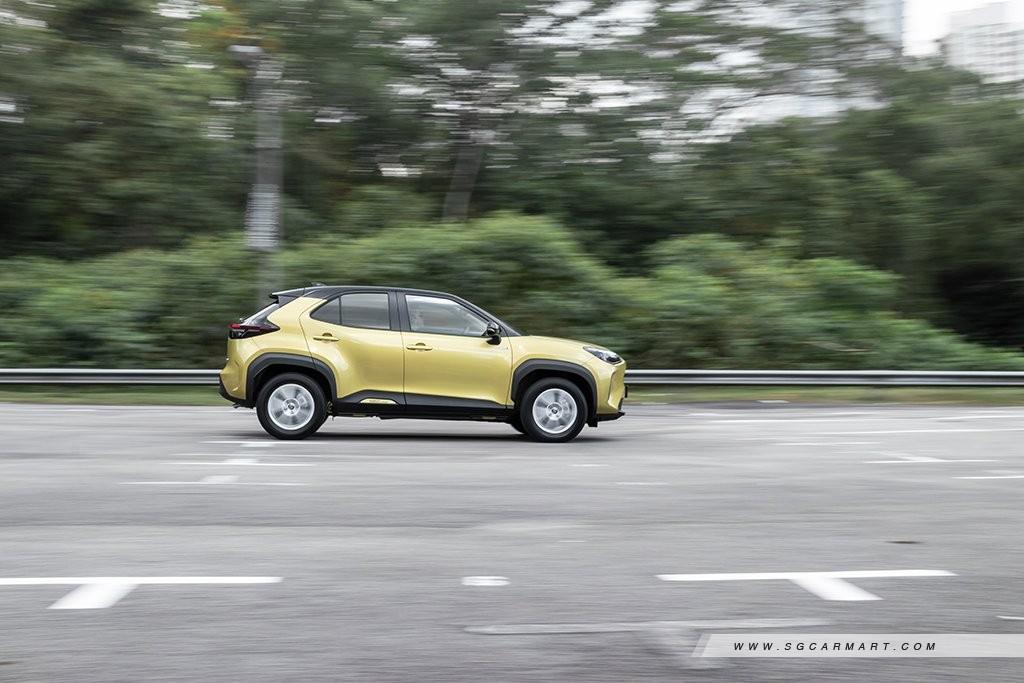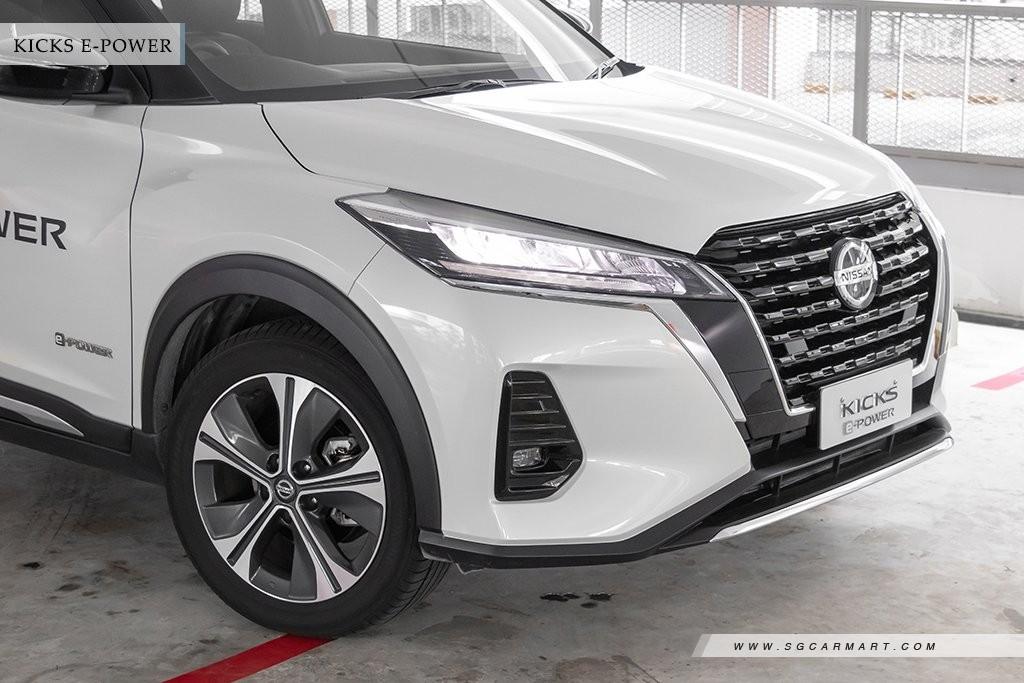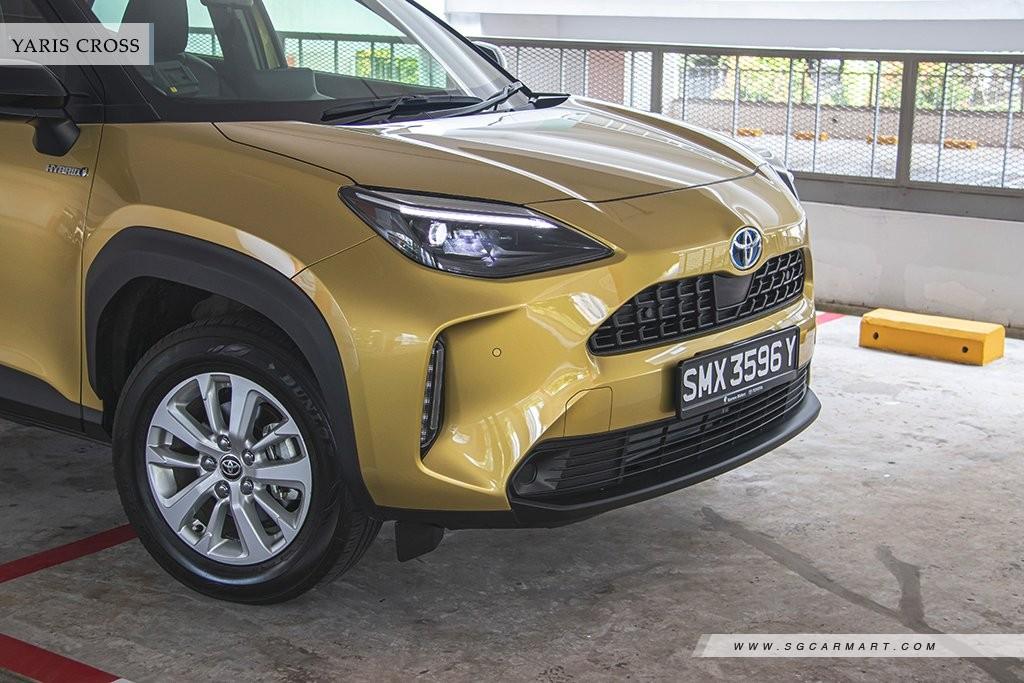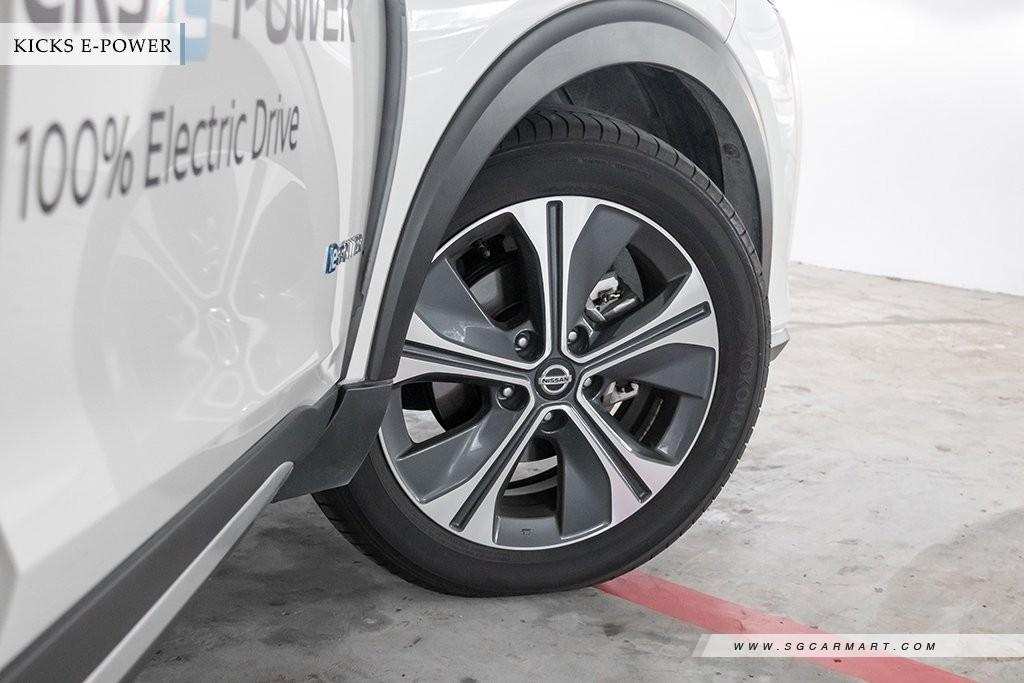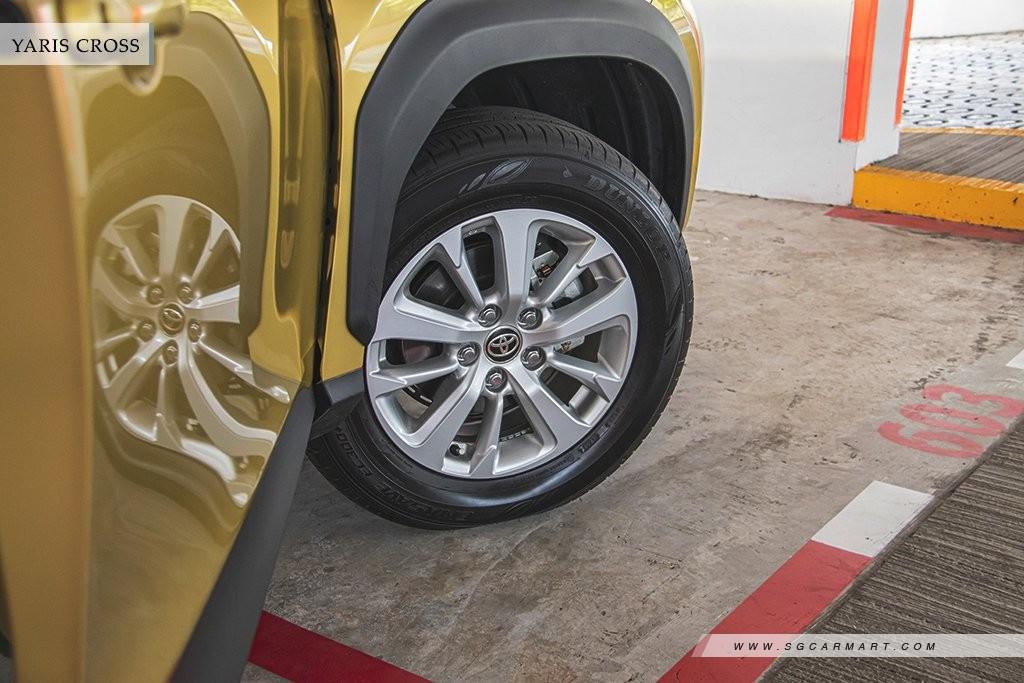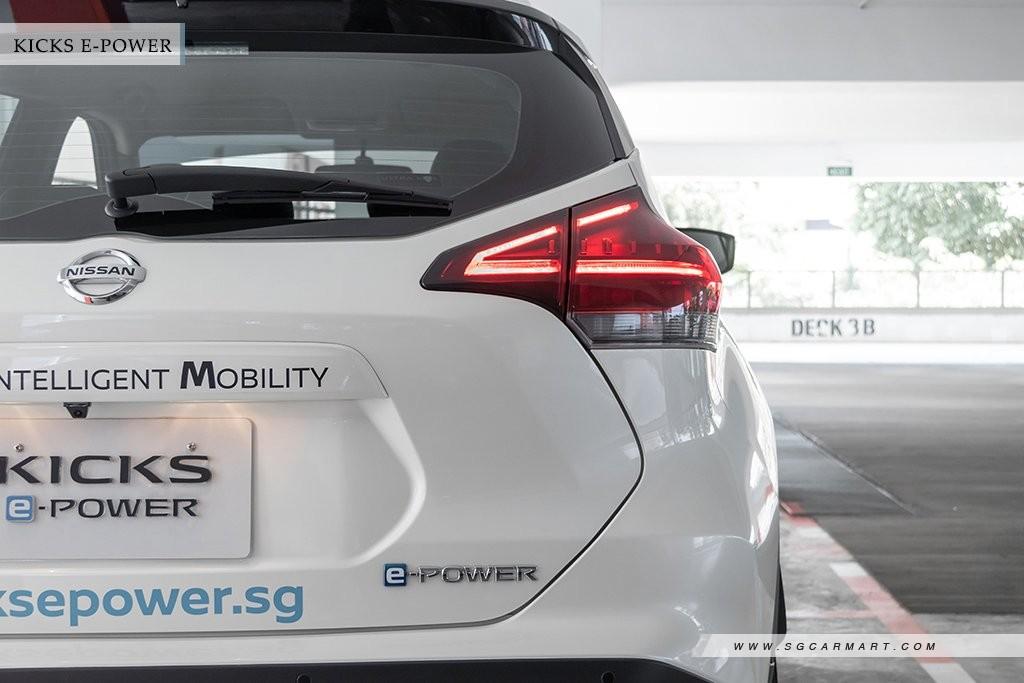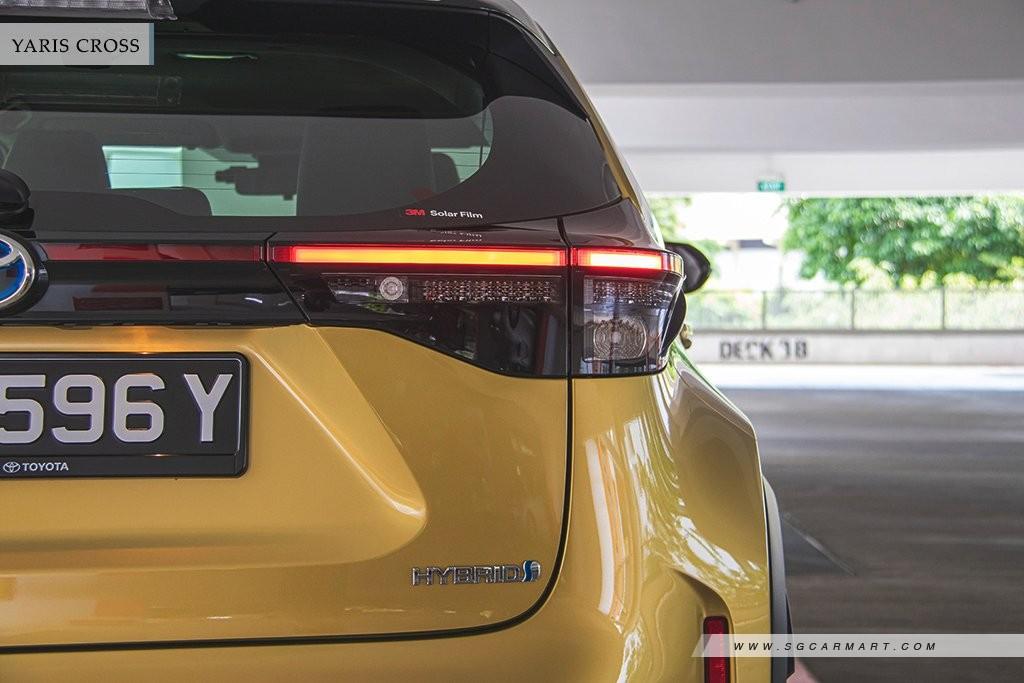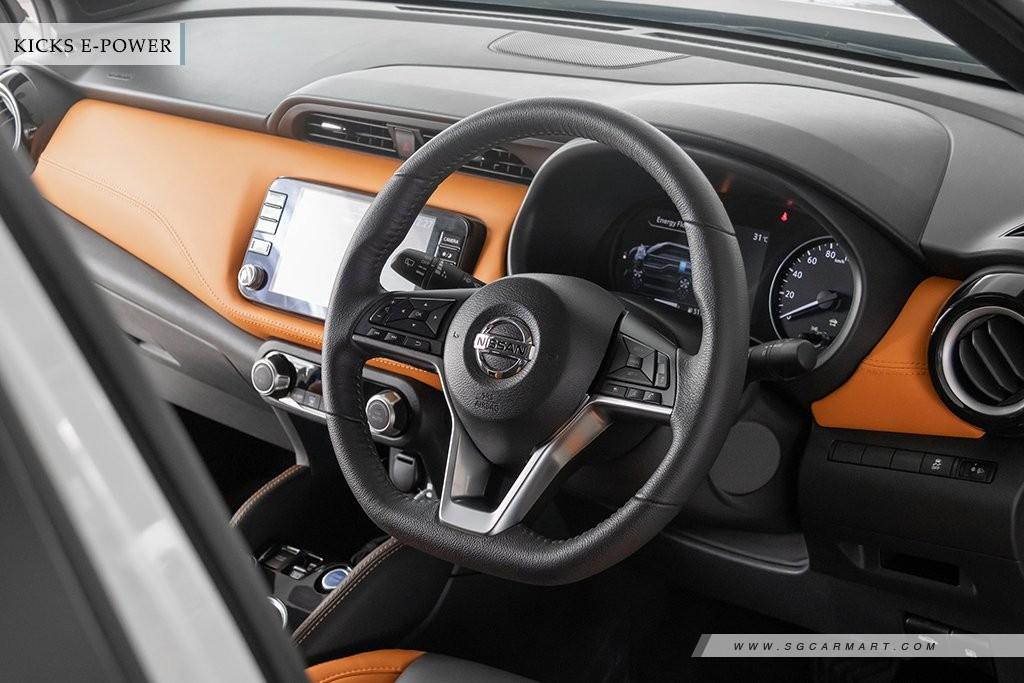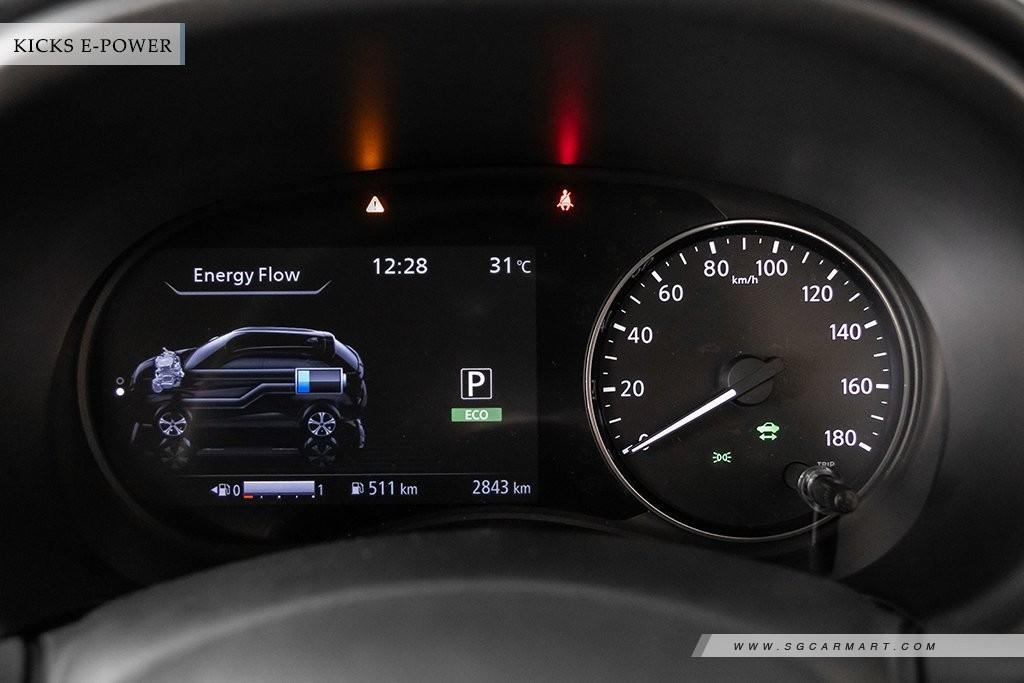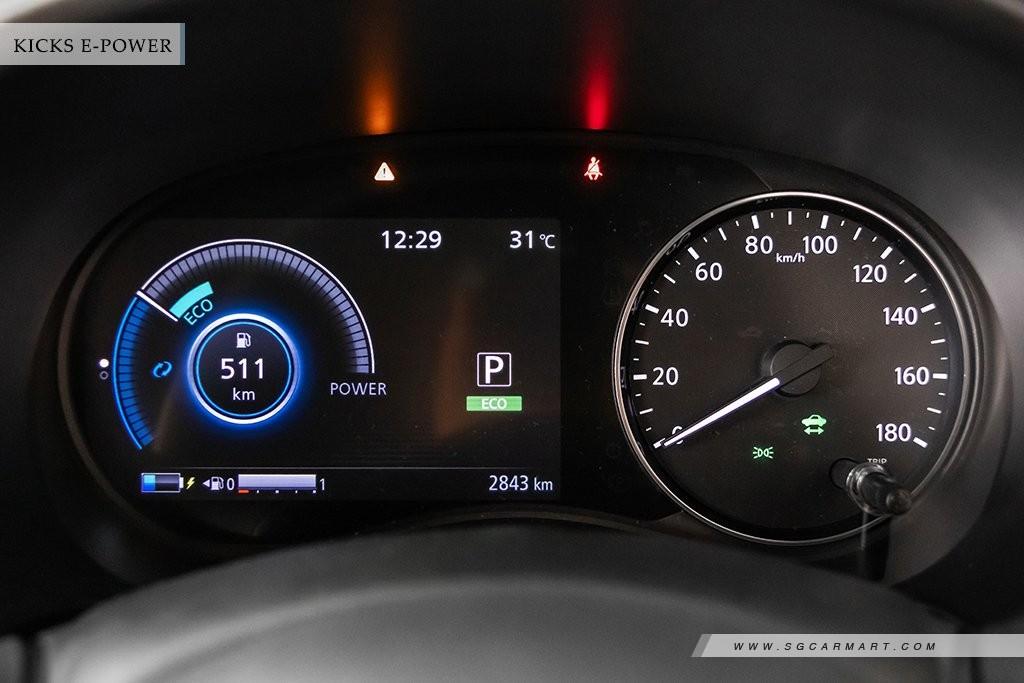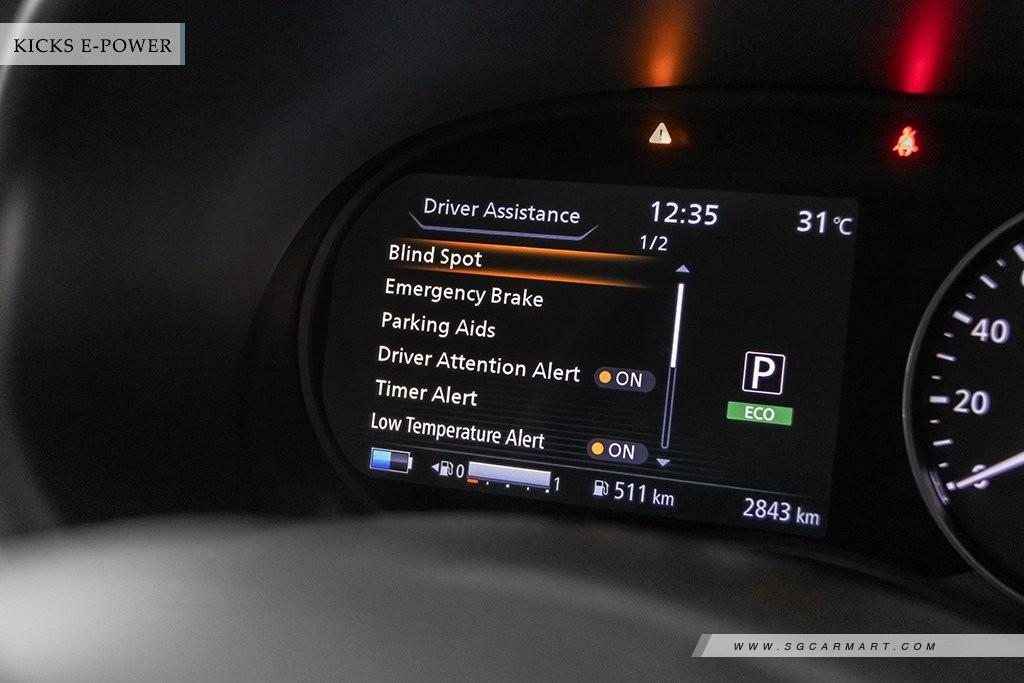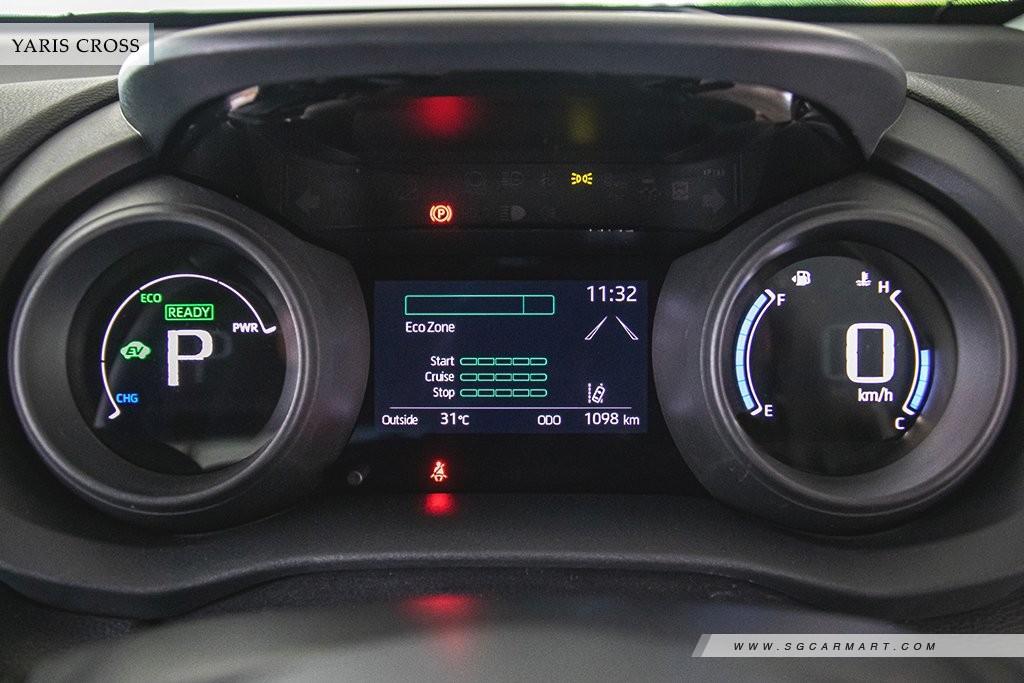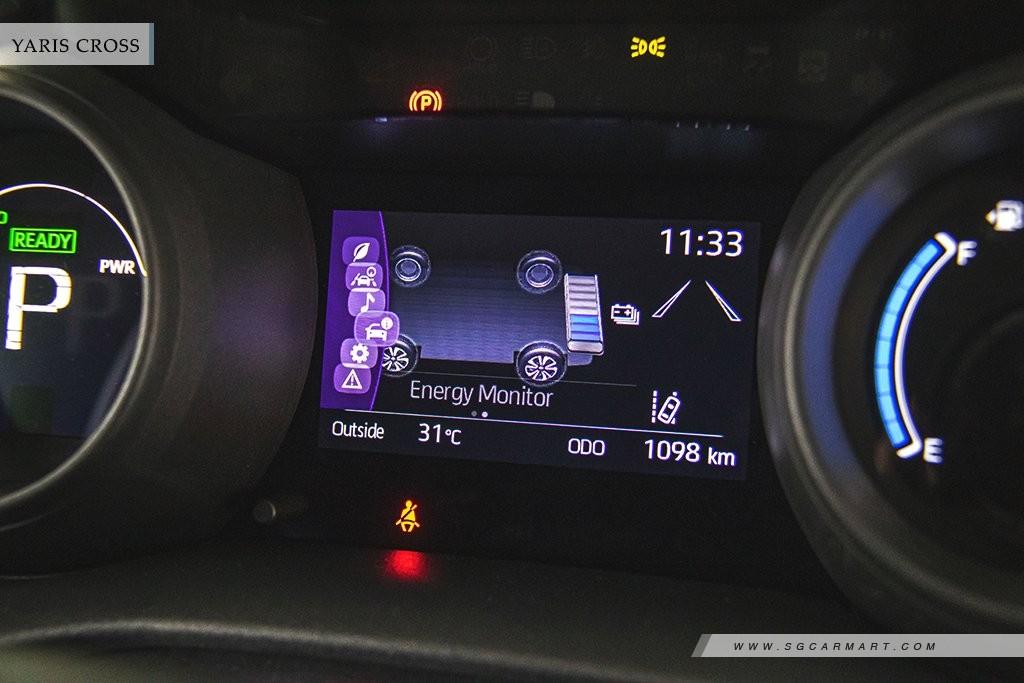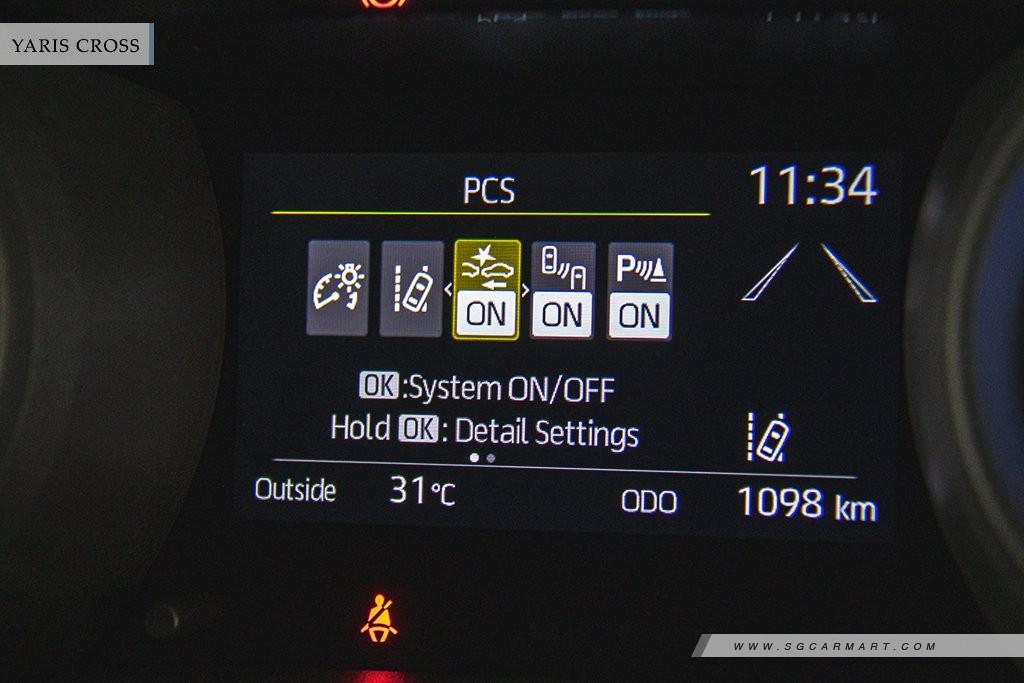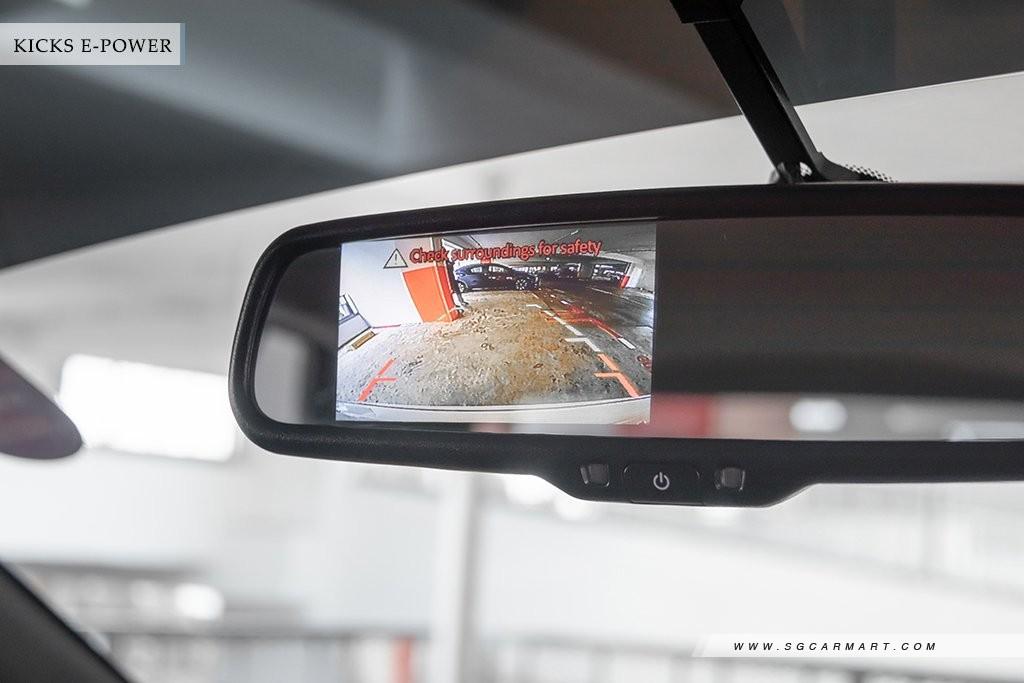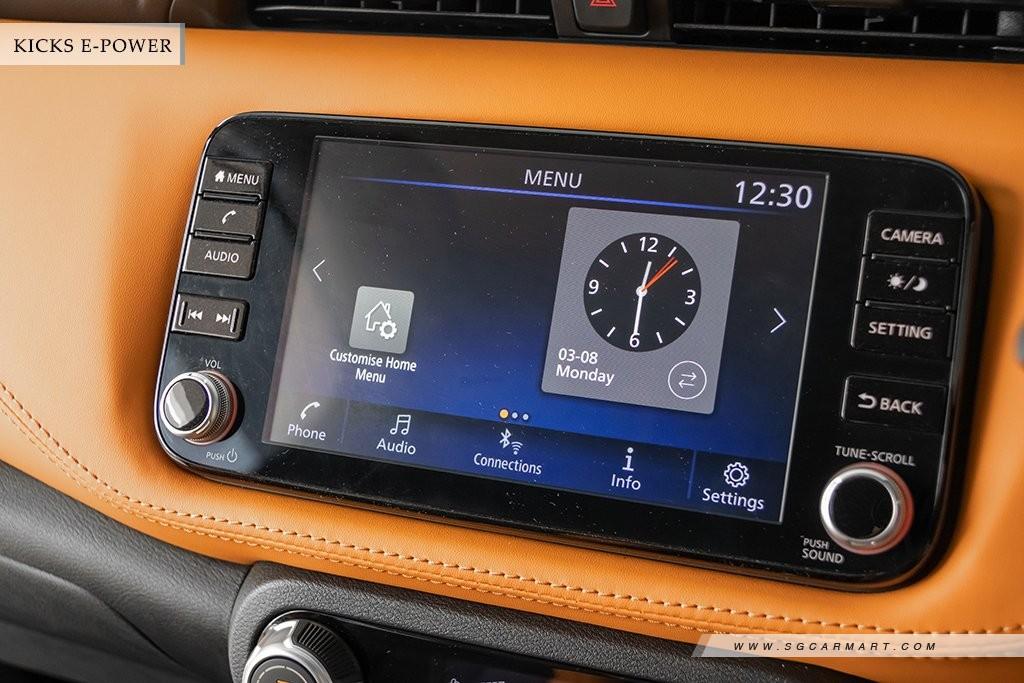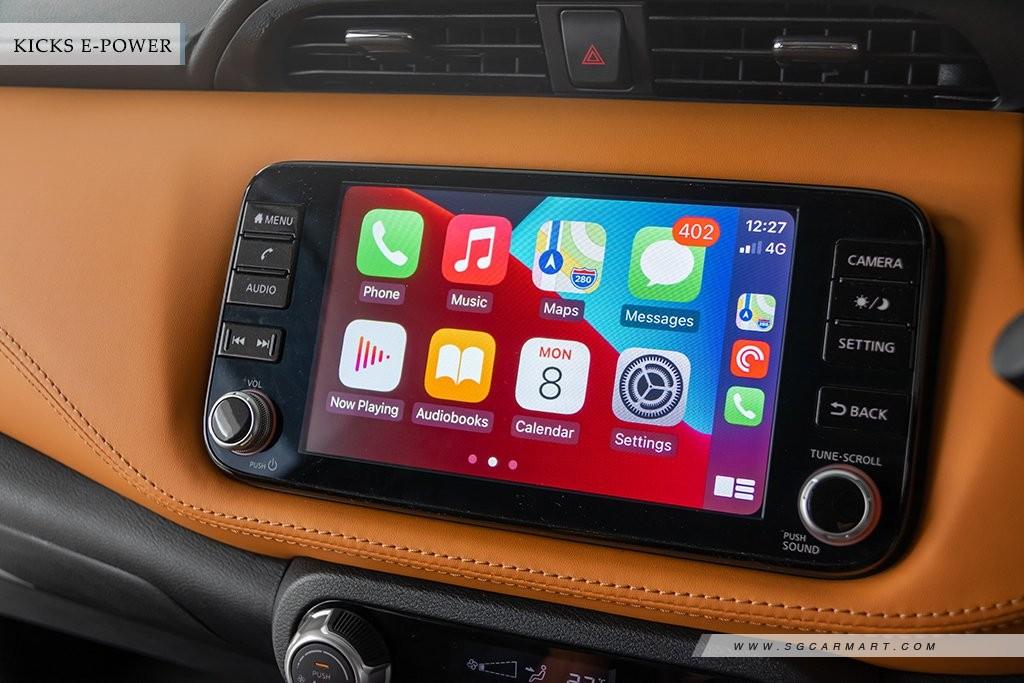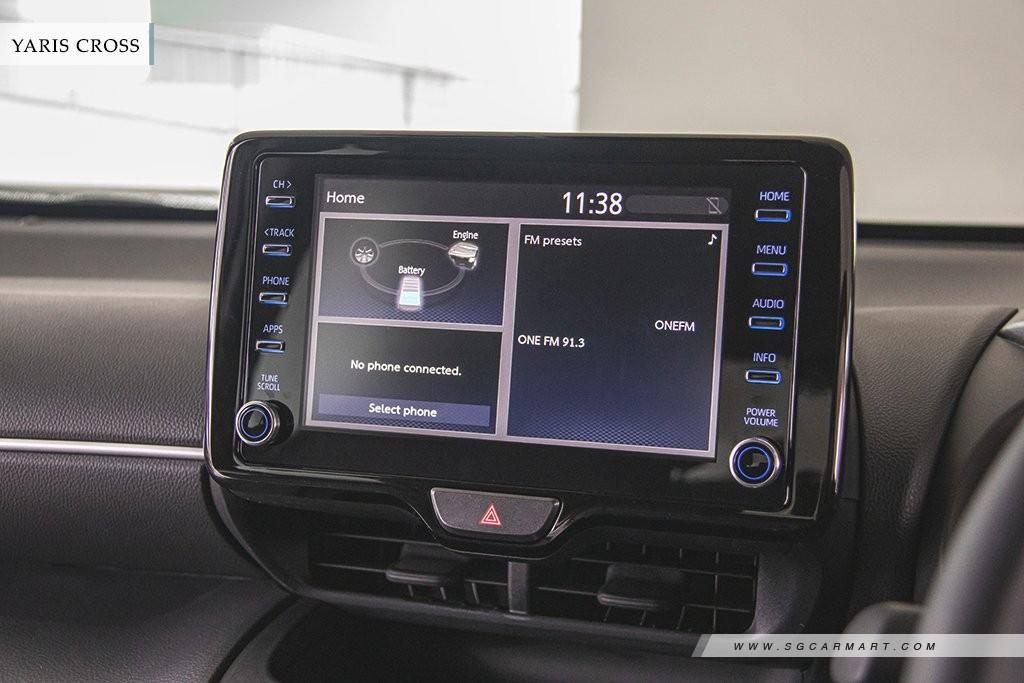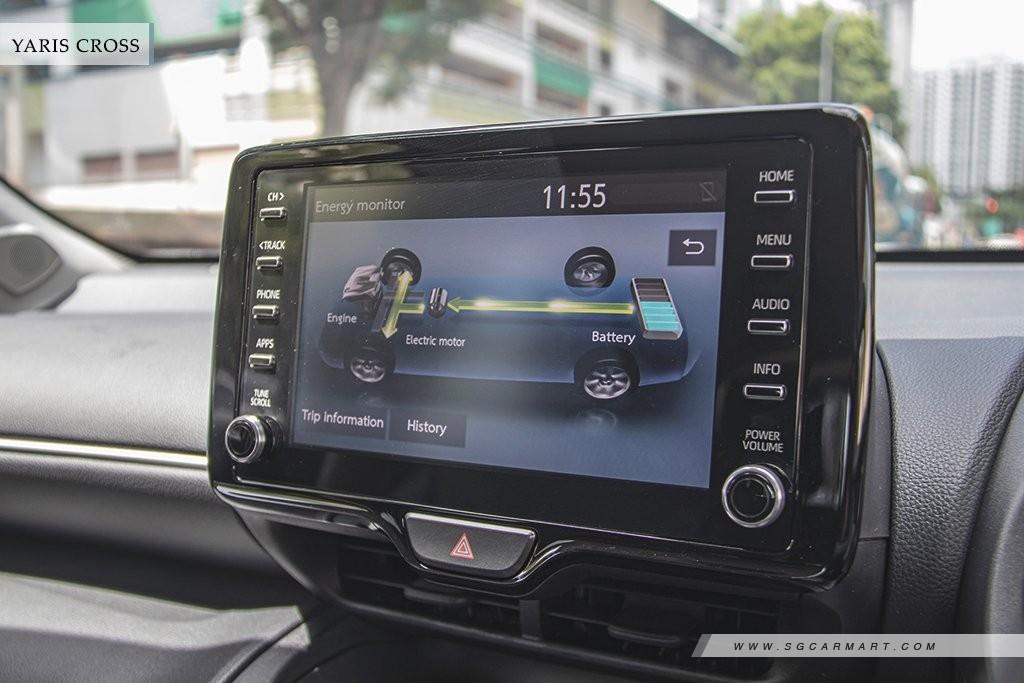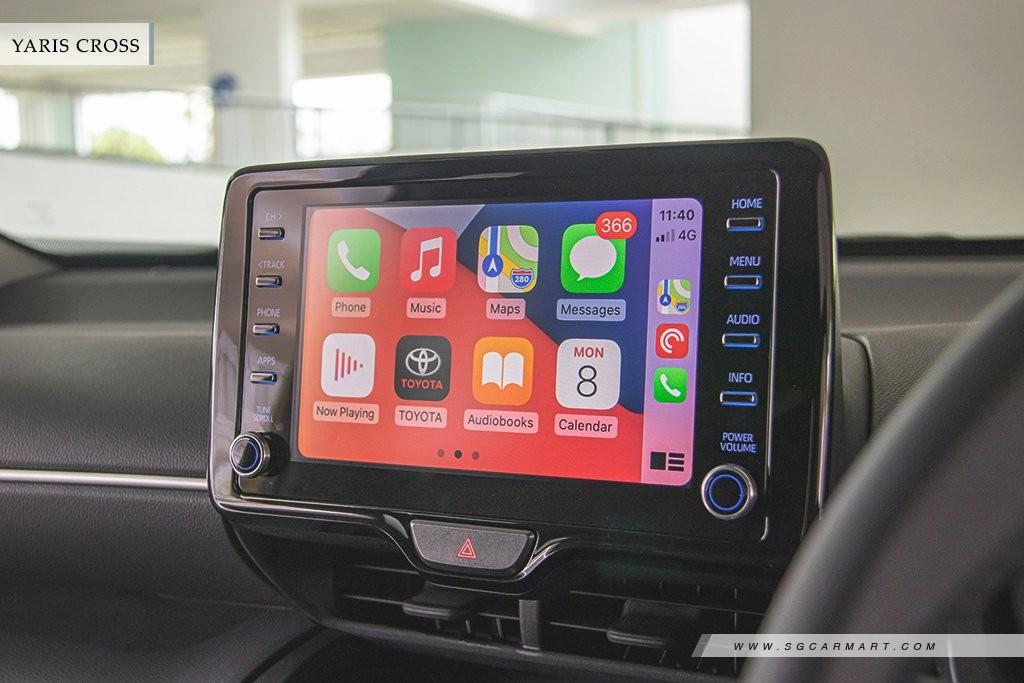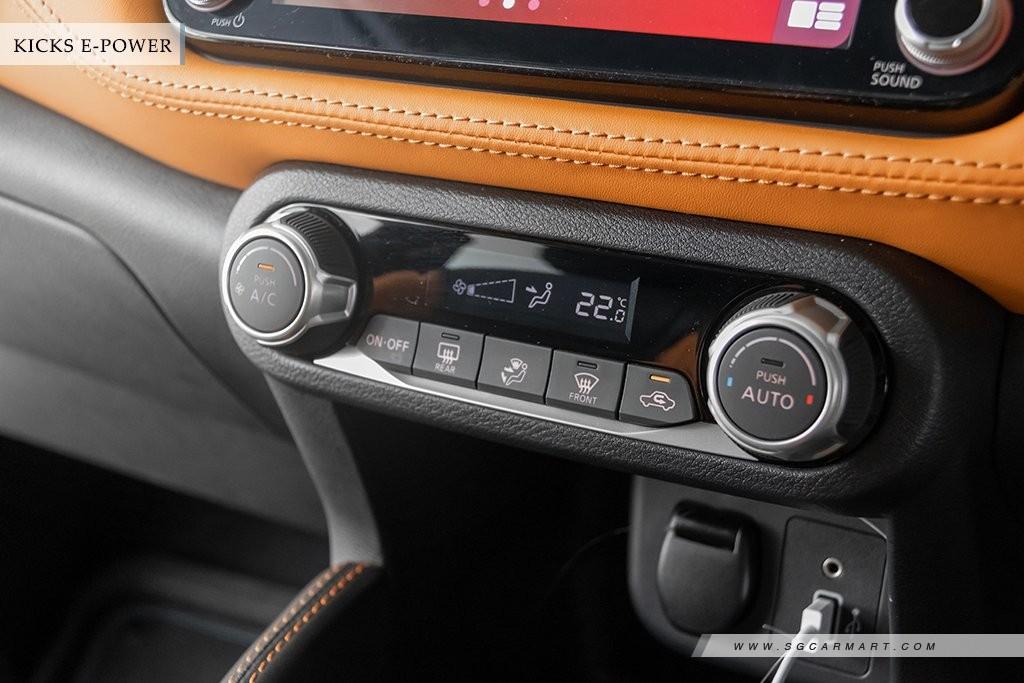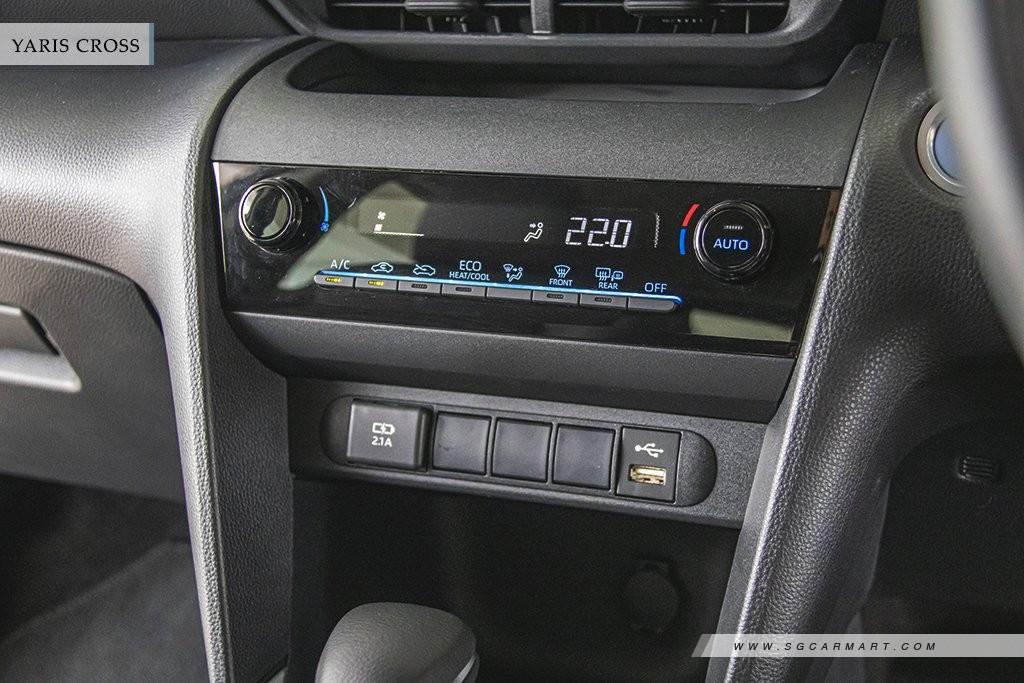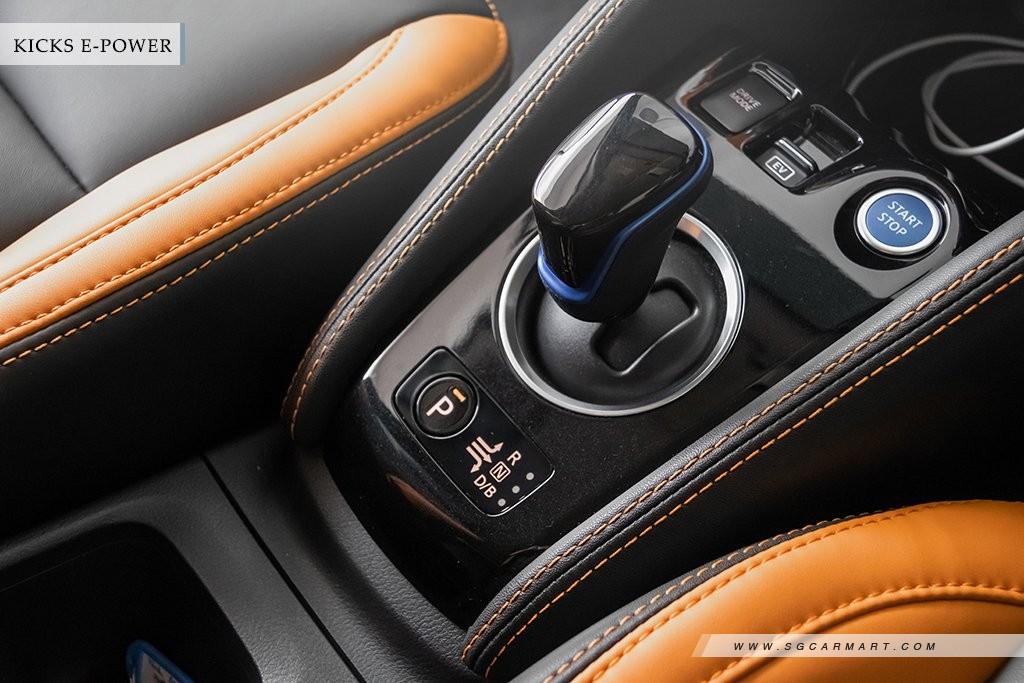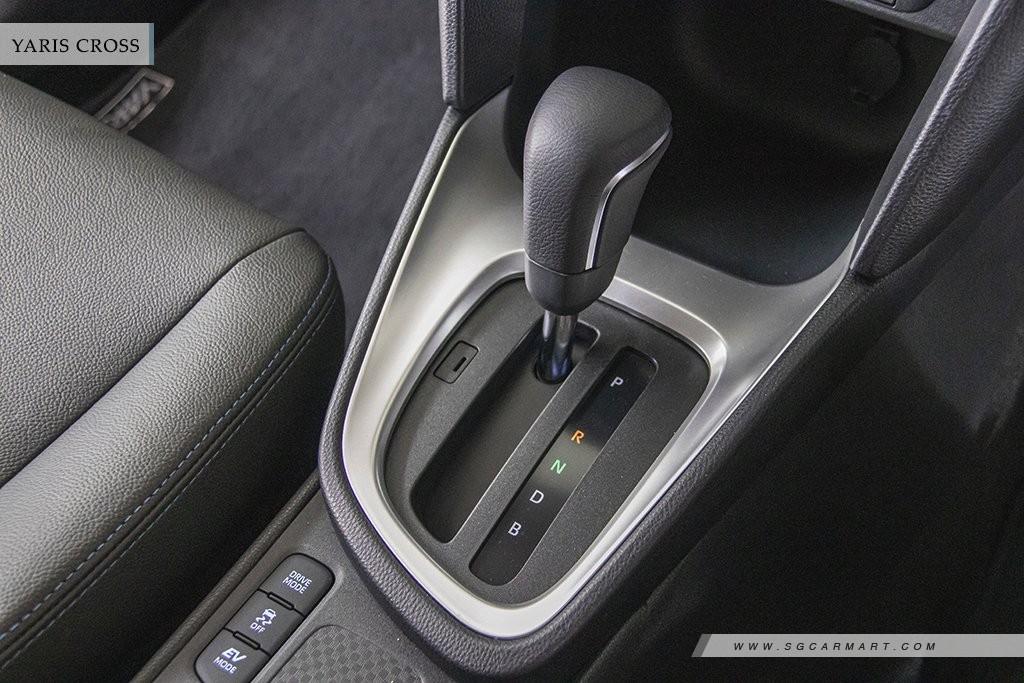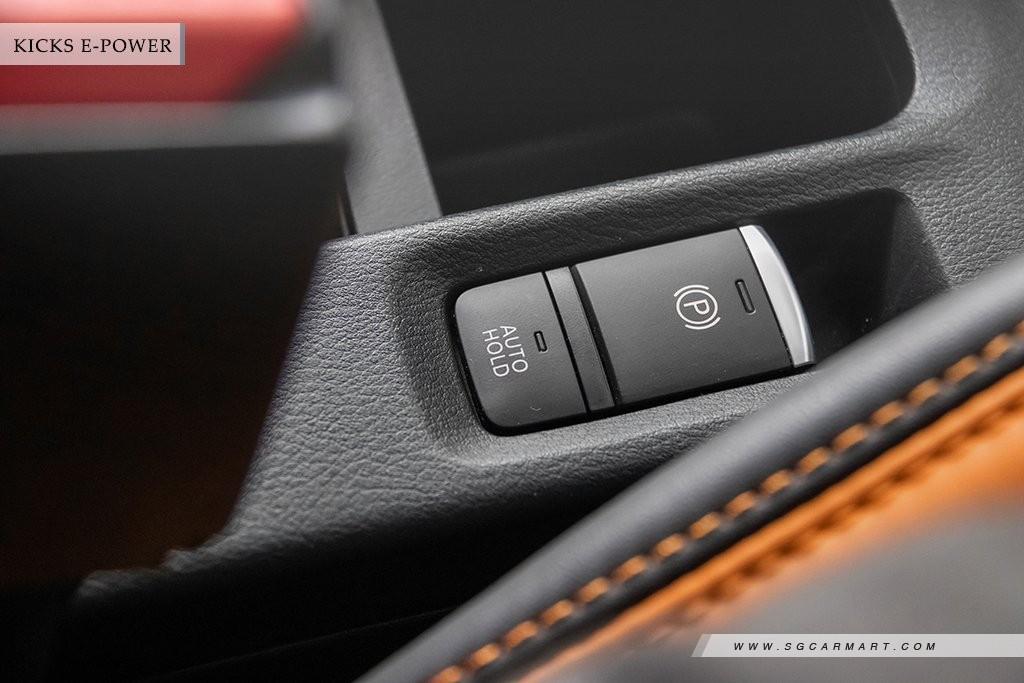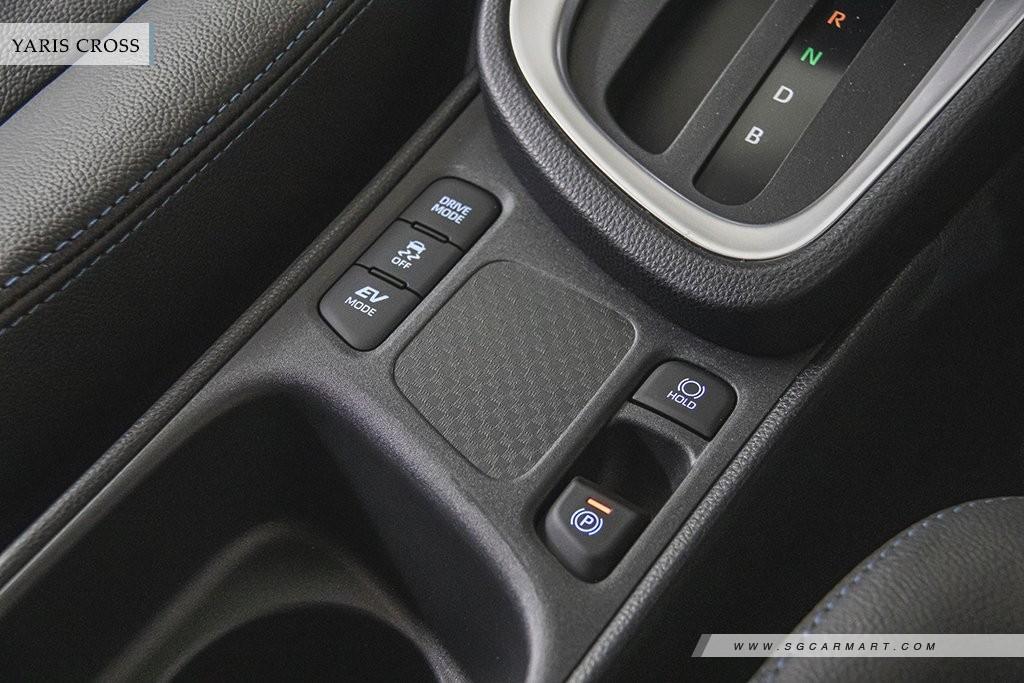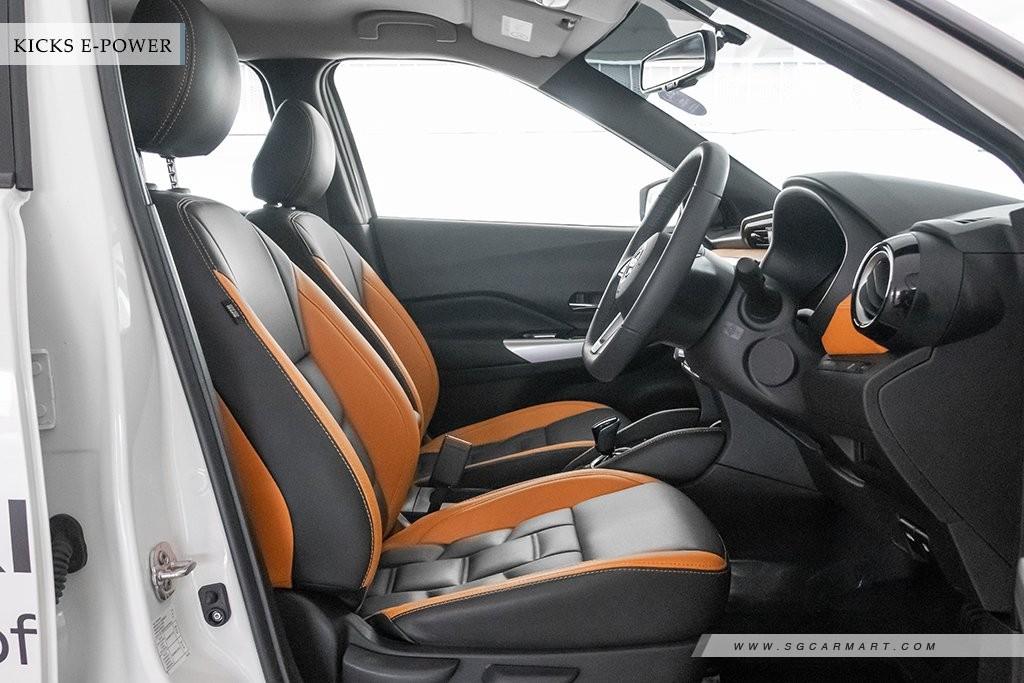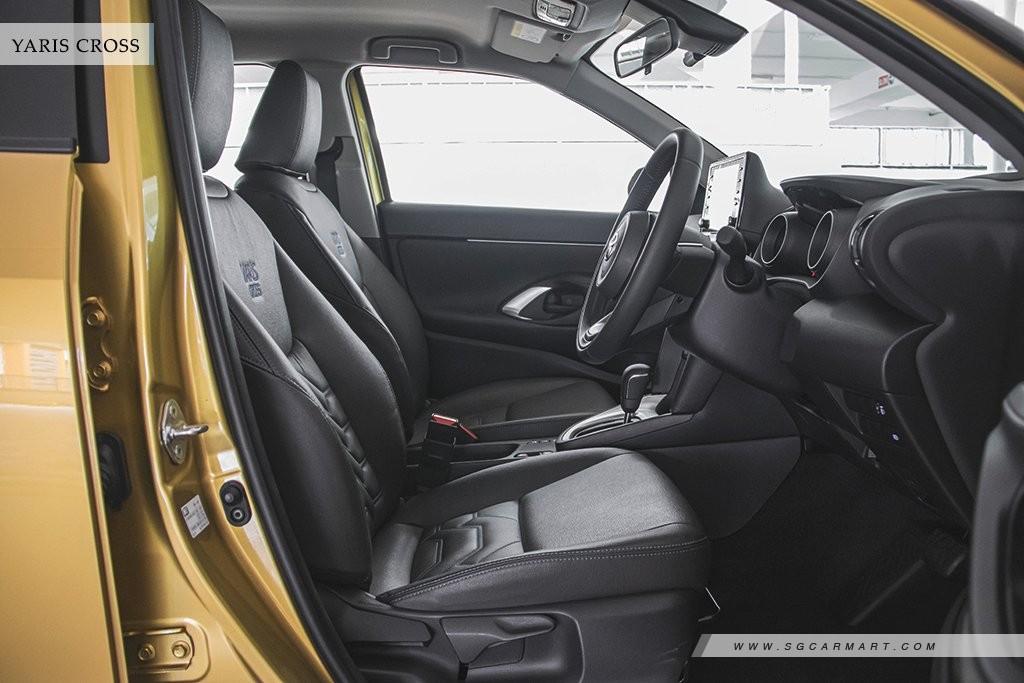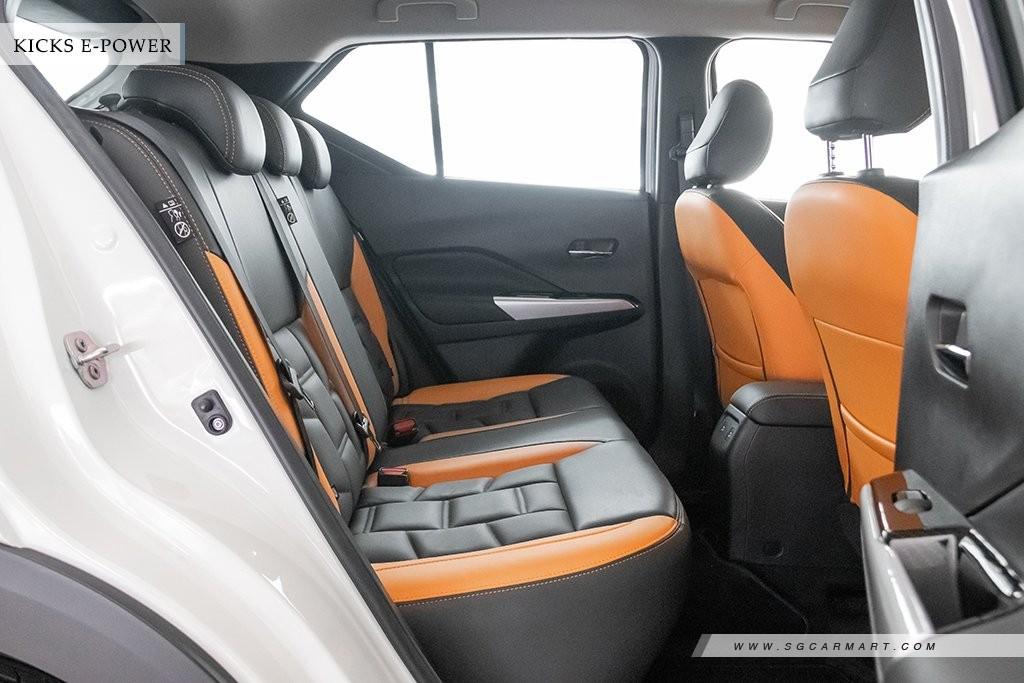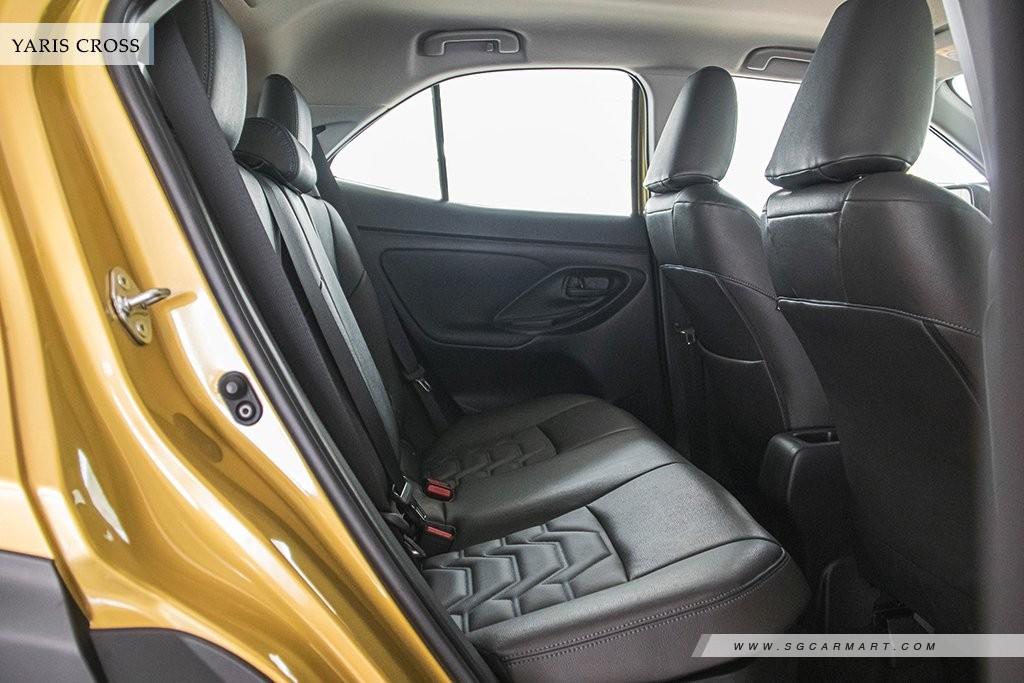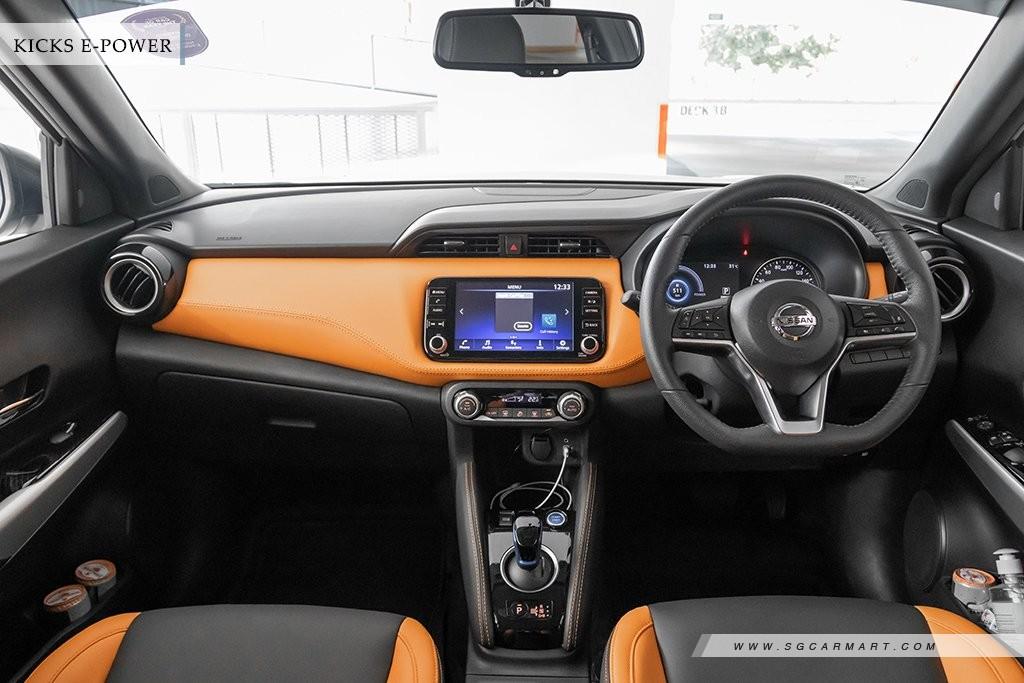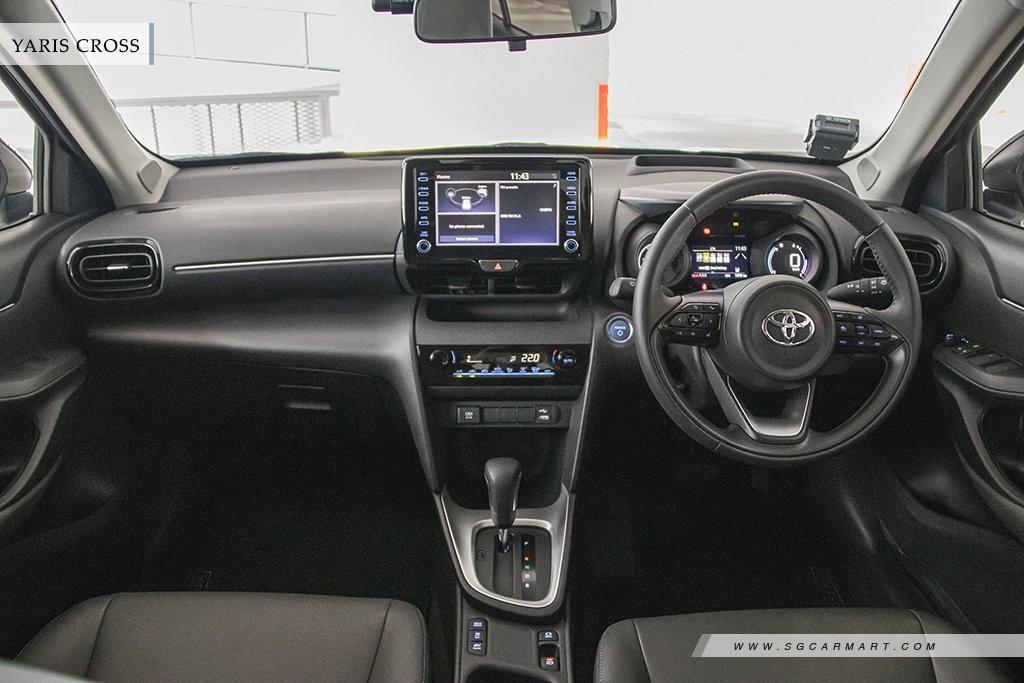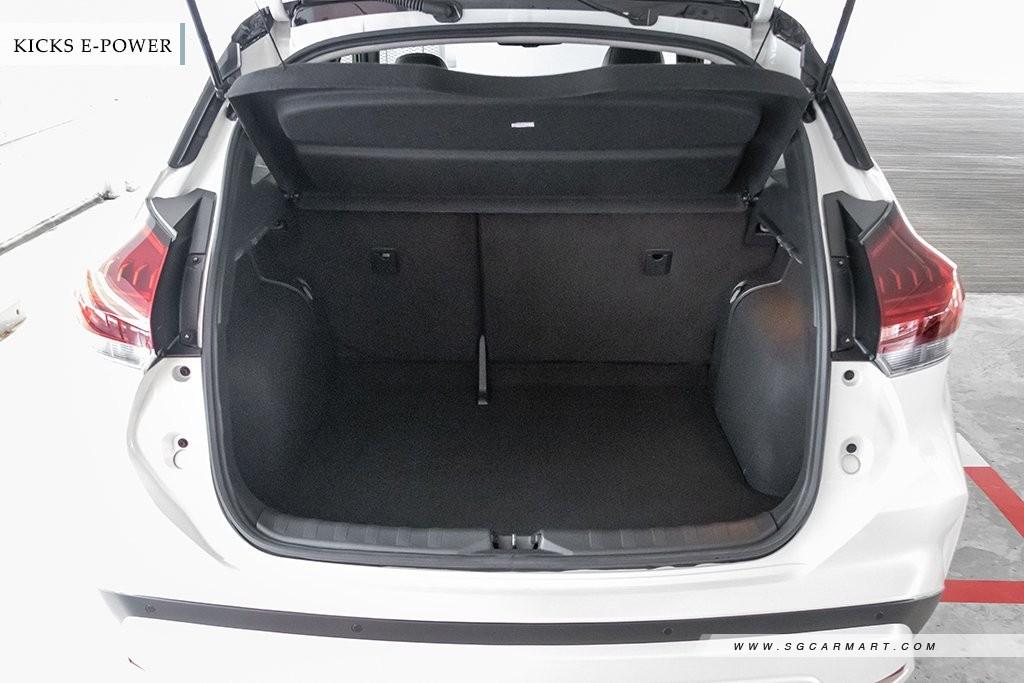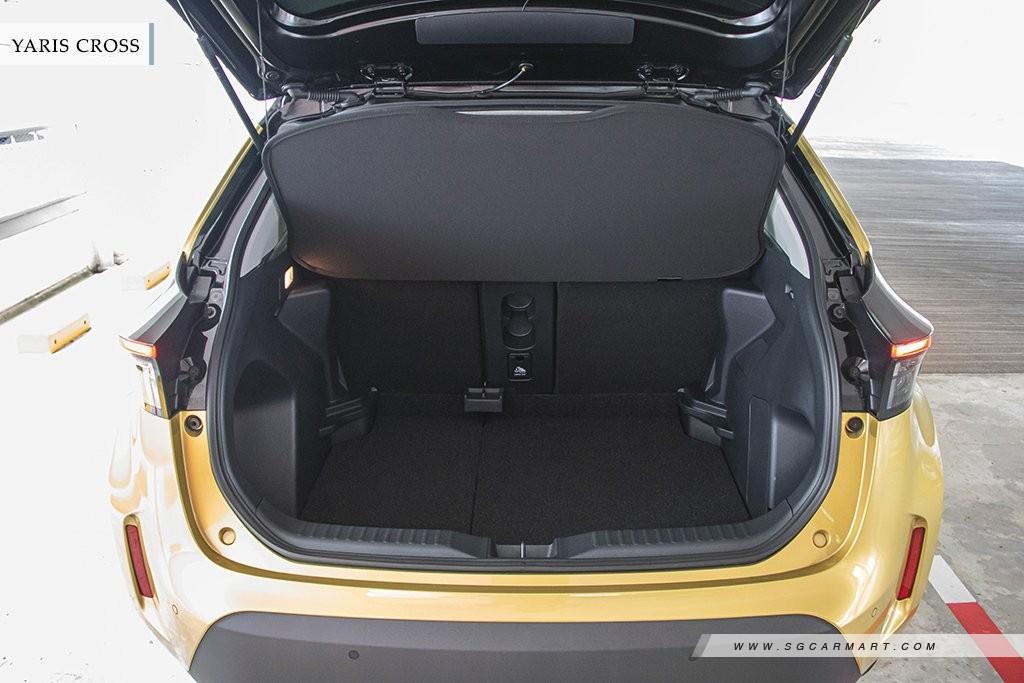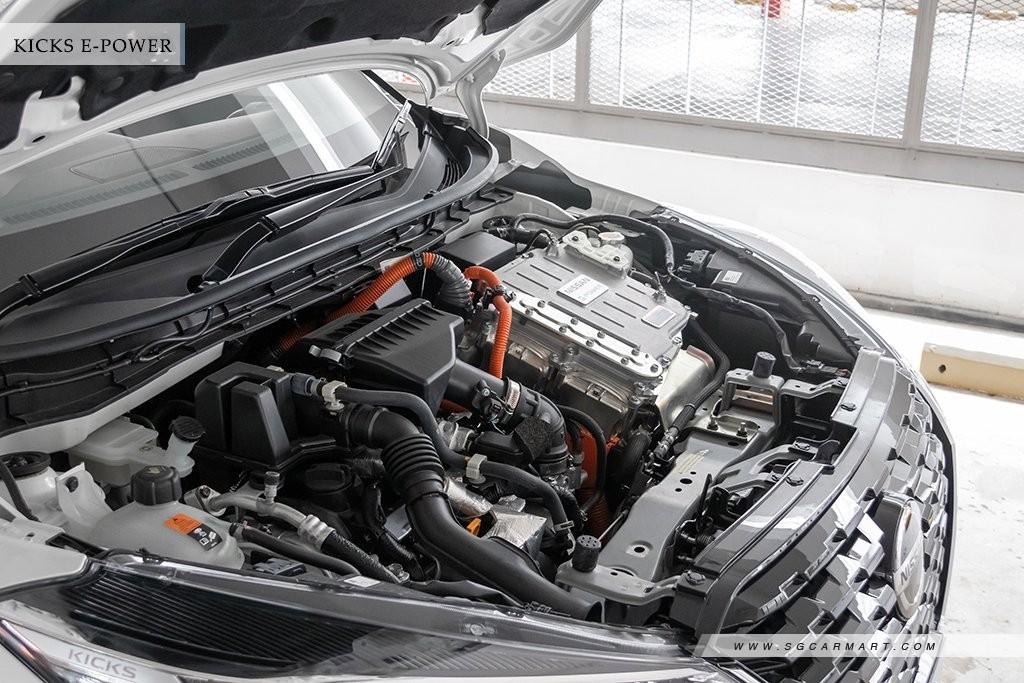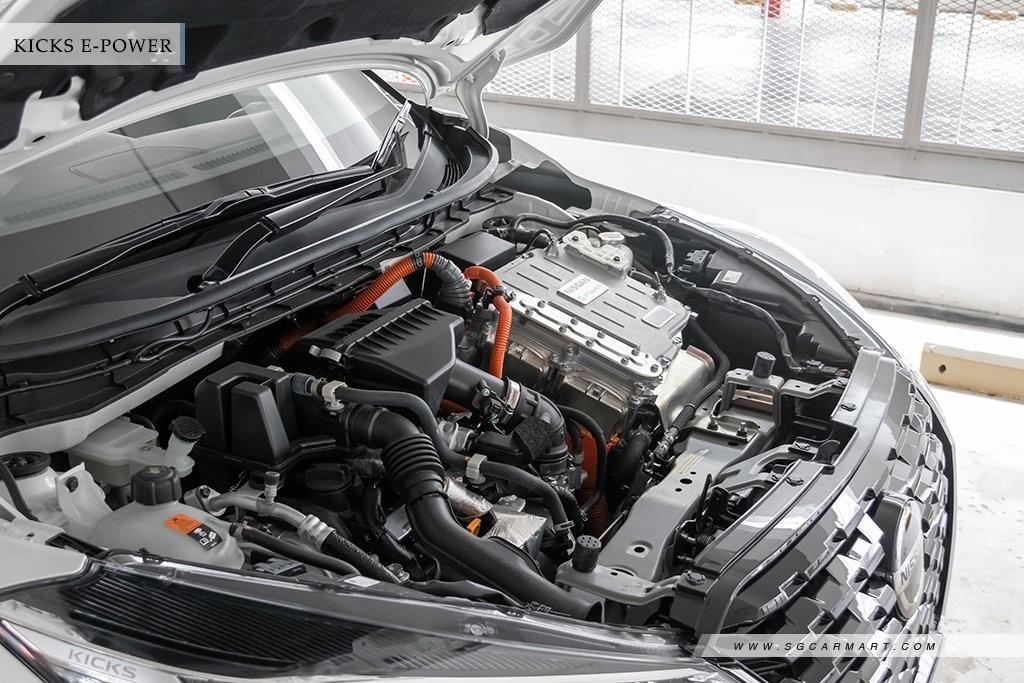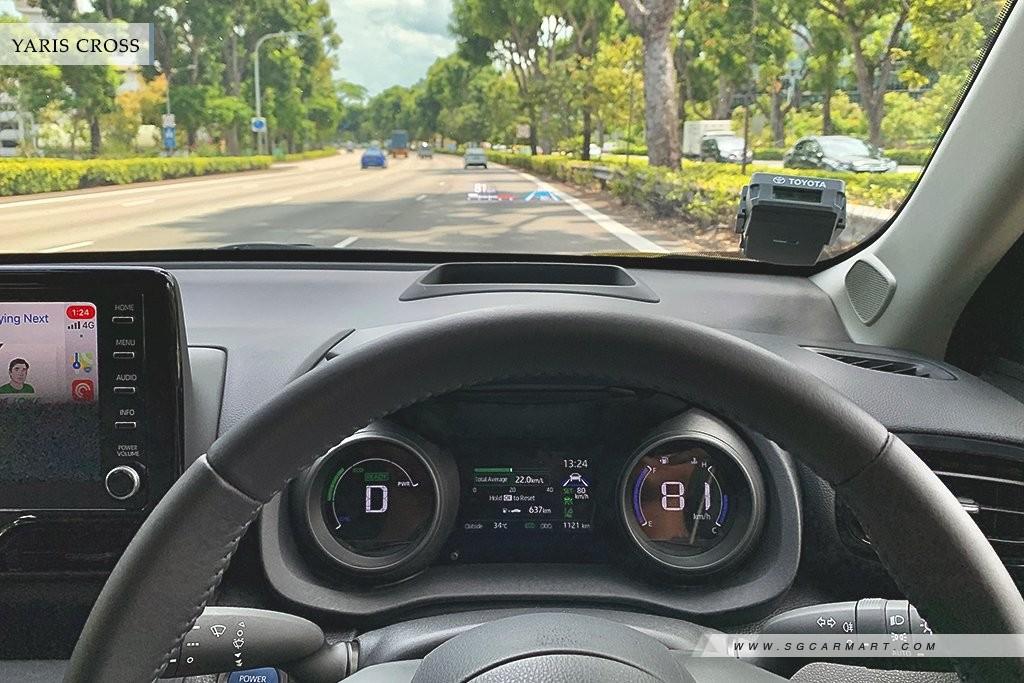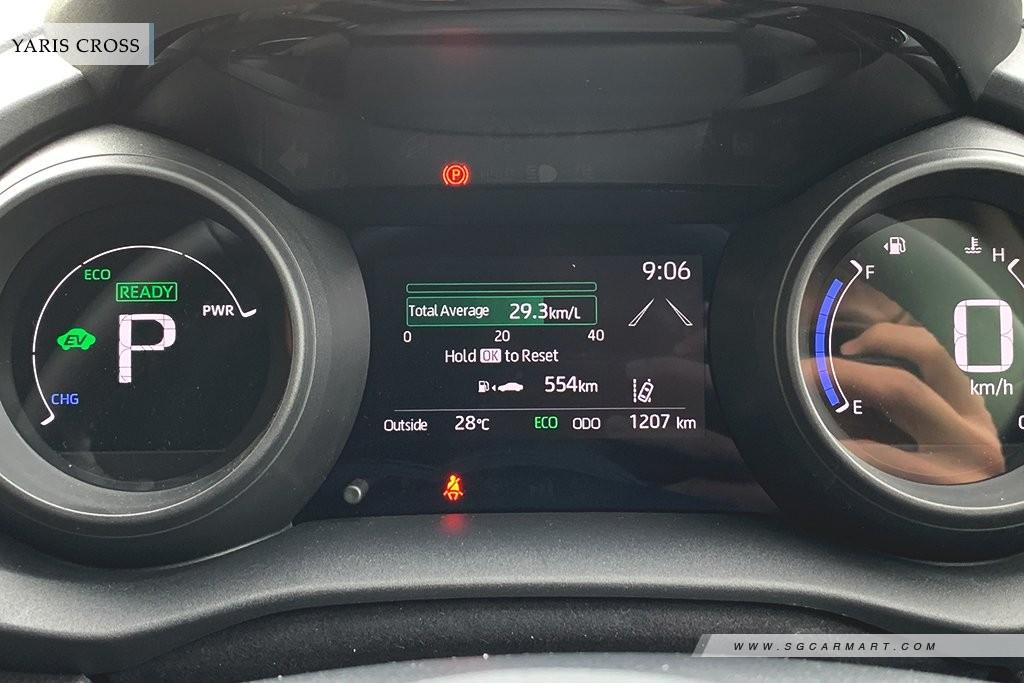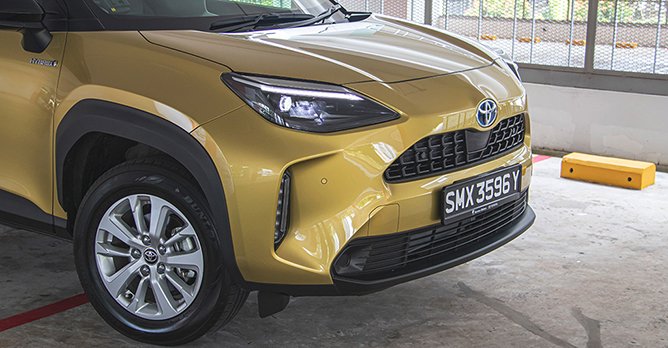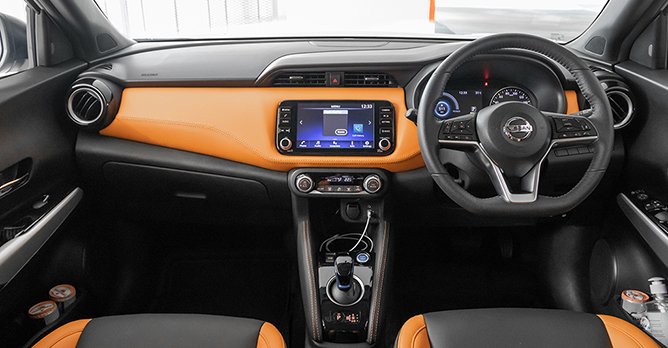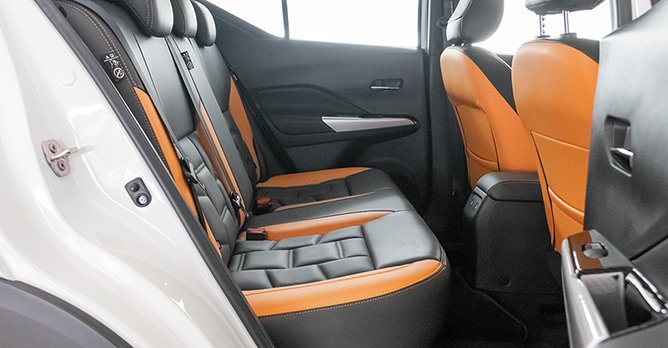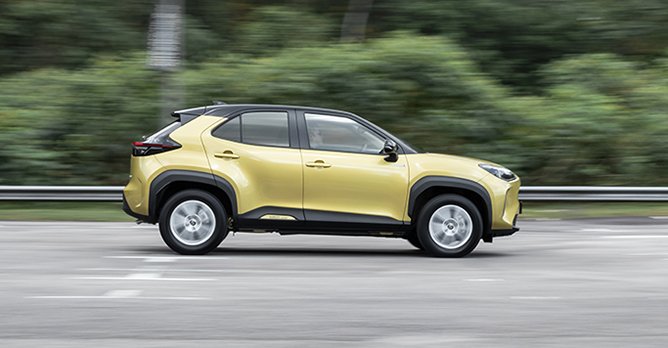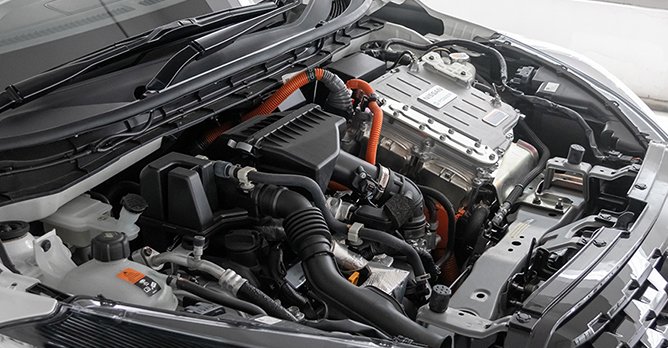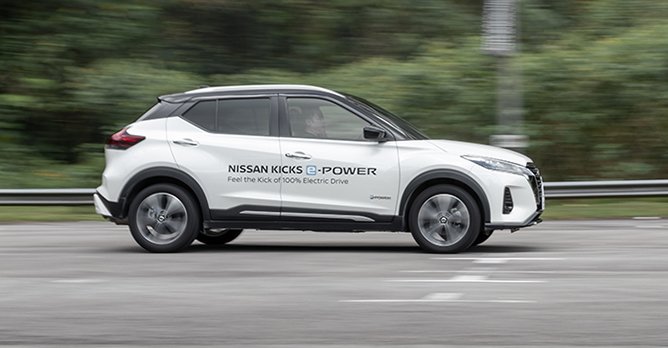Nissan Kicks e-POWER Hybrid vs Toyota Yaris Cross Hybrid
10 Mar 2021|77,299 views
Nissan Kicks e-POWER
Cabin is more spacious and high-quality
More refined drivetrain
Simple yet handsome design
Toyota Yaris Cross
Bold, attention-grabbing design
More equipment and safety systems
Exceptional fuel efficiency
If you are a young driver looking for a first car that's small, practical and sensible, traditional wisdom would hold that you get a compact hatchback, something in the vein of the Honda Jazz (that car has been so popular for good reason). However, drivers nowadays want a little bit more - more style, more space, and more substance. Consequently, crossovers have become the popular choice among buyers.
To this end, manufacturers are also recognising this shifting customer demand. And if it's practicality and long-term affordability you are after, then these two hybrid options should be top of your list - the Nissan Kicks e-POWER (our sgCarMart Hybrid of the Year) and the brand new Toyota Yaris Cross Hybrid.
Which one is the better choice?
Funky or timeless
When it comes to design, the Yaris Cross is undeniably bold and out there. Where Toyotas of the past could be criticised for being somewhat visually bland, no one could call this car bland. Is it nice-looking, though? That probably comes down to taste. It's attention-grabbing, no doubt.
The Kicks is a much safer and more traditional-looking car - it's boxier and more functional-looking, but I personally prefer its slightly simpler and more elegant styling.
Quality control
The interiors of both cars are significantly different. In the Kicks, you get plenty of soft-touch Nappa leather on most of the key touch points. There's also a 7.0-inch TFT screen on the instrument cluster that can be used to display key driving information. The 8.0-inch infotainment system isn't the best as far as design is concerned, but it works well enough. You also get Apple CarPlay.
The Yaris Cross is most certainly a notch below when it comes to quality. It starts from the materials and general feel of the cabin. With plenty of plastics and the cardboard-like door cards, it feels like a cheaper space than the Nissan. The instrument cluster, while digitised, doesn't look quite as neat as the Nissan's. And, I find the area where the window controls are located to be quite cumbersome and unergonomic in the Yaris Cross.
The money appears to have been spent on equipment, though. There's a head-up display, more safety systems than the Kicks, and a remarkably cold air-con.
As far as space in concerned, the Kicks is the slightly bigger car. With a 60mm longer wheelbase, the Kicks has a slightly more spacious rear cabin. The Yaris Cross' rear seats are also slightly tighter to access due to the opening angle of the rear doors. The boot of the Kicks is also a tad bigger (423-litre vs 390-litre).
Here, it's an easy win for the Kicks.
Light footed
Where the Yaris Cross is undeniably superior is when it comes to the hybrid powertrain and straight up efficiency. Toyota's hybrid technology is proven, and it shows. Driven sensibly, you can reasonably expect to better the on-paper figure of 26.3km/L. I managed 27.5km/L.
In the Kicks, I managed to achieve 17.5km/L, which in itself isn't too bad. But, compared to the Yaris Cross, it's really a rather long way off.
That's not to say that the e-POWER system isn't at all good. In fact, it's the more powerful system. It doesn't quite feel like the 260Nm of instantaneous torque that Nissan quotes, but it definitely still builds speed in a more urgent fashion than the Yaris Cross with its 110bhp and 141Nm of torque. However, because the Yaris Cross is 110kg lighter, its feels a tad bit more sprightly on initial pickup.
The Kicks is also more refined where noise is concerned. Overall sound insulation is better, and the engine doesn't sound as harsh as the Yaris Cross when pushed hard.
As far as driveability is concerned, both cars are quite similar. At high speeds, the Yaris Cross is more composed. The Kicks tends to bobble up and down over small tarmac imperfections a little too much for my liking. However, at low speeds, the Kicks' lighter steering makes it easier to manoeuvre through carparks.
Of note, the Kicks e-POWER has that 'one-pedal feel' Nissan likes to tout, whereby you can come to a complete stop on regenerative braking alone. I like that, but I do know drivers for whom it is a complete deal-breaker. So, if you don't like that or find it dangerous, then the Kicks probably isn't for you.
Overall, the Yaris Cross has significantly better fuel efficiency, but otherwise I prefer the way the Kicks drives.
Preferential choice
Coming into this twin test, I thought the two cars would be quite equally matched. As direct competitors, their on-paper differences are not that significant. Even price-wise, both these top-trim models are separated by under $3,000.
However, having driven them back to back, the differences are quite stark.
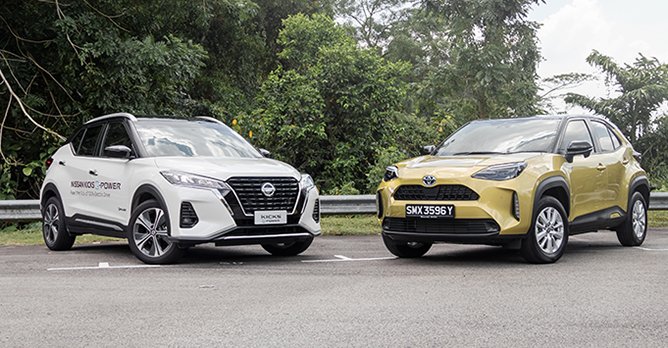
That said, for my money, I'd have the Kicks e-POWER. It's more spacious, the interior feels more high-quality, and I actually prefer the way it drives. Yes, its fuel efficiency is okay to good, but it's a trade-off I'm willing to make for a car that I feel delivers a better quality of life.
Nissan Kicks e-POWER
Cabin is more spacious and high-quality
More refined drivetrain
Simple yet handsome design
Toyota Yaris Cross
Bold, attention-grabbing design
More equipment and safety systems
Exceptional fuel efficiency
If you are a young driver looking for a first car that's small, practical and sensible, traditional wisdom would hold that you get a compact hatchback, something in the vein of the Honda Jazz (that car has been so popular for good reason). However, drivers nowadays want a little bit more - more style, more space, and more substance. Consequently, crossovers have become the popular choice among buyers.
To this end, manufacturers are also recognising this shifting customer demand. And if it's practicality and long-term affordability you are after, then these two hybrid options should be top of your list - the Nissan Kicks e-POWER (our sgCarMart Hybrid of the Year) and the brand new Toyota Yaris Cross Hybrid.
Which one is the better choice?
Funky or timeless
When it comes to design, the Yaris Cross is undeniably bold and out there. Where Toyotas of the past could be criticised for being somewhat visually bland, no one could call this car bland. Is it nice-looking, though? That probably comes down to taste. It's attention-grabbing, no doubt.
The Kicks is a much safer and more traditional-looking car - it's boxier and more functional-looking, but I personally prefer its slightly simpler and more elegant styling.
Quality control
The interiors of both cars are significantly different. In the Kicks, you get plenty of soft-touch Nappa leather on most of the key touch points. There's also a 7.0-inch TFT screen on the instrument cluster that can be used to display key driving information. The 8.0-inch infotainment system isn't the best as far as design is concerned, but it works well enough. You also get Apple CarPlay.
The Yaris Cross is most certainly a notch below when it comes to quality. It starts from the materials and general feel of the cabin. With plenty of plastics and the cardboard-like door cards, it feels like a cheaper space than the Nissan. The instrument cluster, while digitised, doesn't look quite as neat as the Nissan's. And, I find the area where the window controls are located to be quite cumbersome and unergonomic in the Yaris Cross.
The money appears to have been spent on equipment, though. There's a head-up display, more safety systems than the Kicks, and a remarkably cold air-con.
As far as space in concerned, the Kicks is the slightly bigger car. With a 60mm longer wheelbase, the Kicks has a slightly more spacious rear cabin. The Yaris Cross' rear seats are also slightly tighter to access due to the opening angle of the rear doors. The boot of the Kicks is also a tad bigger (423-litre vs 390-litre).
Here, it's an easy win for the Kicks.
Light footed
Where the Yaris Cross is undeniably superior is when it comes to the hybrid powertrain and straight up efficiency. Toyota's hybrid technology is proven, and it shows. Driven sensibly, you can reasonably expect to better the on-paper figure of 26.3km/L. I managed 27.5km/L.
In the Kicks, I managed to achieve 17.5km/L, which in itself isn't too bad. But, compared to the Yaris Cross, it's really a rather long way off.
That's not to say that the e-POWER system isn't at all good. In fact, it's the more powerful system. It doesn't quite feel like the 260Nm of instantaneous torque that Nissan quotes, but it definitely still builds speed in a more urgent fashion than the Yaris Cross with its 110bhp and 141Nm of torque. However, because the Yaris Cross is 110kg lighter, its feels a tad bit more sprightly on initial pickup.
The Kicks is also more refined where noise is concerned. Overall sound insulation is better, and the engine doesn't sound as harsh as the Yaris Cross when pushed hard.
As far as driveability is concerned, both cars are quite similar. At high speeds, the Yaris Cross is more composed. The Kicks tends to bobble up and down over small tarmac imperfections a little too much for my liking. However, at low speeds, the Kicks' lighter steering makes it easier to manoeuvre through carparks.
Of note, the Kicks e-POWER has that 'one-pedal feel' Nissan likes to tout, whereby you can come to a complete stop on regenerative braking alone. I like that, but I do know drivers for whom it is a complete deal-breaker. So, if you don't like that or find it dangerous, then the Kicks probably isn't for you.
Overall, the Yaris Cross has significantly better fuel efficiency, but otherwise I prefer the way the Kicks drives.
Preferential choice
Coming into this twin test, I thought the two cars would be quite equally matched. As direct competitors, their on-paper differences are not that significant. Even price-wise, both these top-trim models are separated by under $3,000.
However, having driven them back to back, the differences are quite stark.

That said, for my money, I'd have the Kicks e-POWER. It's more spacious, the interior feels more high-quality, and I actually prefer the way it drives. Yes, its fuel efficiency is okay to good, but it's a trade-off I'm willing to make for a car that I feel delivers a better quality of life.
Car Information
Nissan Kicks e-POWER Hybrid
CAT A|Petrol-Electric|21.7km/L
Horsepower
95kW (127 bhp)
Torque
260 Nm
Acceleration
-
Toyota Yaris Cross Hybrid
CAT A|Petrol-Electric|26.3km/L
Horsepower
82kW (110 bhp)
Torque
141 Nm
Acceleration
11.4sec (0-100km /hr)
Thank You For Your Subscription.

